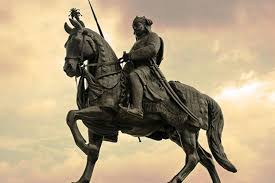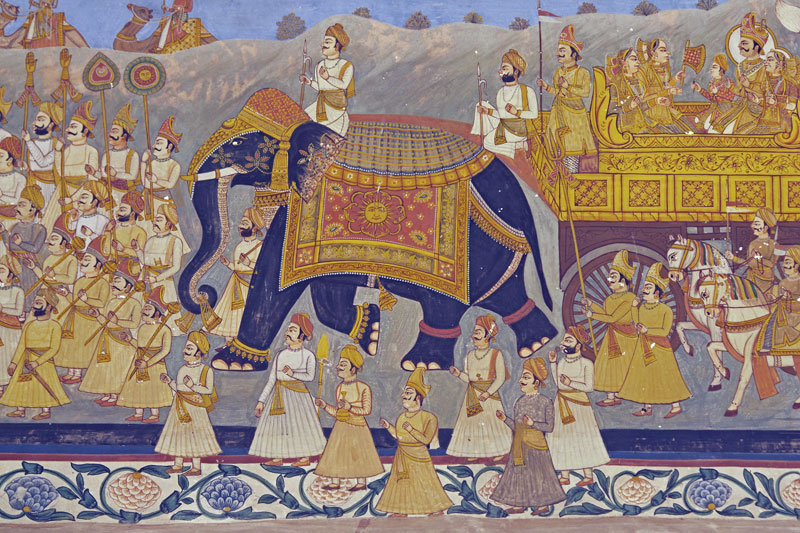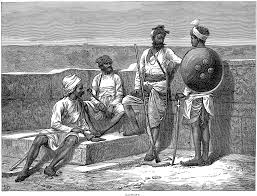Origin Of Rajput
The term Rajput (Origin Of Rajput) is first used by Colonel Tad in a book written in the eighth century, Annals and History Rajsthan. The term Rajputs came into being as a caste only after the Arab invasion. The period between 7th to 12th century in Indian history is known as Rajput period.
The word Rajan is used in the Rigveda. In economics, the term Rajput was used for them, Yuvang Chwang called them Kshatriyas and after the Arab invasion the word Rashtrakutas came into vogue. Historians differ on their origin.

origin of rajput for upsc
- From ancient Kshatriyas Origin Of Rajputs: – Historians like Gauri Shankar Ojha consider Rajputs as originating from ancient Kshatriyas, according to them, the ancient Kshatriyas later became famous as Rajputs.
- Foreign Origin of rajput: – Some foreign historians such as Kernalayed and Smith etc. believe their origin from the foreign nations Shaka, Kushan, Sithian etc.
- From Laxman Origin of Rajputs: – In the records of Pratiharas, their origin is shown from Laxman. According to them, just as Lakshman had protected Ramchandra as the gatekeeper, the Pratiharas did India with eyes. Pratihara means gatekeeper.
- From Agnikund Siddhanta Origin of Rajputs: – The mention of Agnikund Siddhanta is found in the book Prithviraj Raso, written by Chandrabardai. It is also found in Bhaskar, etc., a descendant of Suryamal, the navigator of the story.
Rajput era
In the history of Indian history, the period after Harshavardhana, the period from seventh to twelfth century is called “Rajput era“. Important Rajput dynasties of this period include the Chauhan dynasty, the Parmar dynasty and the Gurjara-Pratihara dynasty.
What is the different opinion about the origin of Rajputs?
According to Prithvi Raj Raso, in the three of Gautam August, Vashistha etc. conducted a yagna on Mount Abu. With this sacrifice, he created three enemies Pratihara, Chalukya and Parmar. Later, another enemy with four arms was born Chahwan. Thus the origin of four Rajputs is shown from Agni Kund theory.
Different views of origin of Rajputs
The Agnikunda Siddhanta has special significance because Agni is a symbol of purity. It seems that some foreigners were also consecrated through fire and included in the Rajputs.
Tripartite Conflict: – After the death of Harsha, a struggle between the Pratiharas, Palas and Rashtrakutas between the 8th century to the 10th century about the authority over Kannauj, which is known in Indian history as the Tripartite conflict. In this struggle, the Pratiharas finally win and their authority over Kannauj is established. After the fall of the Pratiharas, the Gahadwalas dominate Kannauj.
He was known as the King of Kashi. After the decline of the Pratiharas, some other sporadic dynasties also arise in North India. These included Chahman of Delhi and Ajmer, Chandel Malwa Parmar of Bundelkhand, and Kalchuri of Tripuri. Among all these dynasties, the Paramaras are considered as the feudatories of the Rashtrakutas, while the rest of the other Pratiharas.

Rulers participating in trilateral conflict: –
Pratihara Dynasty Rashtrakuta Dynasty Pal Dynasty
- Vatsaraja 1. Dhruva 1. Dharmapala
- Nagabhatta II 2. Govind III 2. Devpal
- Rambhadra 3. Amoghavarsh I 3. Vigraha Pal
- Mihir Bhoja 4. Krishna II 4. Narayan Pal
- Mahendra Pal
After the death of Harsha, Kannauj was ruled by the Ordnance rulers. Among them, there was a struggle for the throne of two brothers Chakrauddha and Indraudh. At this time, the Pratiharas and the Rashtrakutas intervened.
rajput population
There are more than 200 million(census 2011) Rajputs in India. Rajasthan is their original home, but they are inhabited in other parts of the country like Jammu and Kashmir, Himachal Pradesh, Haryana, Madhya Pradesh, Uttar Pradesh, Bihar, Orissa, Gujarat, Maharashtra and Andhra Pradesh
Origin of Kshatriya
Comment on the principle of origin of Rajputs
Genealogy of rajputs
A Rajput (Raja-Putra from Sanskrit, “son of a king“) is a member of one of the ancestral clans of western, central, northern India and parts of Pakistan. They claim to be descendants of the Hindu warrior classes, ruling India. Rajputs emerged prominently during the 6th to 12th centuries.
Who is the real kshatriya
The word Kshatriya originates from “Kshatra” which means cosmic authority and power, it has less to do with a successful leader in war and more on the tangible power to claim sovereignty over a region. It is a symbol of ownership on the land of the genetic clan.
Difference between Rajput and Kshatriya
The social fabric of ancient India was made up of different castes and each caste had its own role which was responsible to all the people of the society and played its role in the peace, security, economic work, guidance and development of the society.
All these castes were mainly under the four varnas, in which the responsibility of protecting the society was the responsibility of the Kshatriyas, Yajna, worship of the gods and the guidance of the Brahmins, the responsibility of the business Vaishya and the responsibility of service work was the Shudra class.
These four varnas had an important and indispensable role in the society. The role of the Kshatriyas in these varnas was quite significant after the Brahmins. They used to protect the society and animals, while providing good governance to the society so that the people of the society can live peacefully.
Later, this Kshatriya varna was converted into Kshatriya caste and later it came to be known as Rajput. However, from the very beginning, many castes were included in it and many castes were also excluded from this class.
Who is rajput
The Rajputs were known for their pride, valor, sacrifice and sacrifice. There was indomitable courage and patriotism in them. Rajputs are considered as apostles of Rajput and they had sons of kings, relatives and other family members. Since the Rajputs belonged to the ruling class, they mainly consisted of Kshatriya caste.
However, many castes of the ruling class joined the Rajput caste due to the rule and power. The period up to 12th century after Harshavardhana is known as Rajput period. By this time, a total of 36 Rajputs had become famous in North India. Among them, Chauhan, Pratihar, Parmar, Chalukya, Solanki, Rathore, Gehlot, Sisodia, Kachwaha, Tomar etc. were prominent.

History and Origin of Rajputs
History experts have not remained one with respect to the origin of Rajputs. Many historians believe that the descendants of the ancient Kshatriya varna turned into a Rajput caste. Some scholars, especially in the colonial period, believed that the Kshatriyas were descendants of foreign invaders such as the Scythians and Hunas, who settled in Indian society and became part of this society.
Colonel James Tad and William Crook believed the Scythian origins of the Kshatriyas. VA Smith also links the Kshatriyas to castes like the Shakas and the Kushans. Ishwari Prasad and DR Bhandarkar have also supported these principles and consider Rajputs as their descendants. At the same time, some other scholars considered Rajputs as Brahmins who ruled.
Modern researches suggest that the Rajputs came from different ethnic and geographical regions and settled in Bharatbhoomi. The Rajputra first appears in 11th-century Sanskrit inscriptions used for royal designations. It was used for the king’s sons, relatives, etc.
According to medieval literature people belonging to different castes came into this category due to being in the ruling class. Gradually, the Rajputs emerged as a social class which later became hereditary.
Origin of rajput modern belief
Presently Rajputs are considered descendants of these Kshatriyas but it took a long time to come from Kshatriya to Rajput and it could get its present form in 16th century. However in North India it is used to describe various genealogies from the sixth century.
The earliest examples of the use of the word Rajputra as a non-hereditary designation for royal officials are often found in the 11th century, which gradually developed into a social class. The class consisted of people of different ethnic and geographical backgrounds. It was later hereditary until the 16th and 17th centuries.
The Rajput word Rajput meaning as Prithviputra has also been used somewhere, but it actually started to be used only during the Mughal period. It began to be used as a Rajput and a dynasty as a Rajput, as a distortion of the Rajputra. Rajputra is also used for Kshatriyas in the compositions of Kautilya, Kalidas, Banabhatta etc. The Arabic writer Alberuni has also used the word Kshatriya in his books not referring to Rajput or Rajputra.
- Rajputs are known by different names in North India such as Thakur in Uttar Pradesh, Babusaheb or Babuan in Bihar, Bapu in Gujarat, Rawat or Rana in mountainous regions etc.
- Kshatriya is a part of the varna system of Indian society whereas Rajput is a caste.
- Kshatriya is a word derived from Vedic culture, while the word Rajput evolved from the sixth century to the twelfth century.
- Not all Kshatriyas are Rajputs but all Rajputs are Kshatriyas.
Origin of rajput quiz
- What is the name of the ruler who built the Vijay Pillar?
(a) Rana Kumbha
(b) Rana Sanga
(c) Rana Ratan Singh
(d) Rana Hamir
2 Who among the following was the first to attack India?
(a) Afghan
(b) Magol
(c) Arab
(d) Turk
3 ‘Prithviraj Raso’ – Who wrote the following?
(a) Bhavabhuti
(b) Jaidev
(c) Chandbardai
(d) Banabhatta
4 Who built the temples at Khajuraho?
(a) Holkar
(b) Scindia
(c) Bundela Rajput
(d) Chandel Rajput
5 Where is the Victory Pillar located?
(a) Sill
(b) Jhansi
(c) Chittorgarh
(d) Sikri
6 Who was the ruler of Gujarat at the time of Mahmud Ghaznavi’s invasion of Somnath’s temple in 1025 AD?
(a) Bhimdev.
(b) Bhimdev II
(c) Mulraj
(d) Mulraj II
7 Who wrote ‘Mitakshara’, a book on Hindu law?
(a) Nay Chandra
(b) Infallible
(c) Vigyaneshwar
(d) Kamban
8 Black Pagodas –
(a) In Egypt
(b) Sri Lanka
(c) Konark
(d) Madurai
9 Which of the following temple complex has a huge Nandi idol which is considered to be the largest Nandi idol of India?
(a) Brihadishwar Temple
(b) Lingaraj Temple
(c) Kandariya Mahadev Temple
(d) Lopakshi Temple
10 Who among the following has the fame to run a new Samvat-
(a) Dharmapala
(b) Devpal
(c) Vijayasen
(d) Laxman Sen - 1 Jaydev, the creator of ‘Geet Govind’, decorated whose gathering?
(a) Dharmapala
(b) Devpal
(c) Vijayasen
(d) Laxman Sen
2 Who built Sompur Mahavihara?
(a) Kumaragupta I
(b) Harsh
(c) Dharmapala
(d) Vijayasen
3 The temples of Bhubaneswar and Puri are built in which style?
(a) Civil
(b) Dravid
(c) Vesar
(d) None of these
4 The first invader in India was-
(a) Qutubuddin Aibak
(b) Mahmud Ghaznavi
(c) Muhammad-bin-Qasim
(d) Muhammad Ghori
5 In which state is the Jagannath temple?
(a) Bengal
(b) Orissa
(c) Kerala
(d) Uttar Pradesh
6 The creator of the huge Suryadev temple of Konark located in Puri was-
(a) Narasimha-I
(b) Kapilendra
(c) Purushottam
(d) Chod Gang
7 Rani Padmini’s name is associated with Alauddin Khalji’s Chittorchad Vijay.
(a) Maharana Pratap Singh
(b) Ranjit Singh
(c) Raja Man Singh
(d) Rana Ratan Singh
Name of the founder of 8 Vikramashila Education Center is-
(a) Devpal
(b) Dharmapala
(c) Nayapal
(d) Narendrapal
9 In which of the following cities is the Lingaraja Temple located?
(a) Bhubaneswar
(b) Bijapur
(c) Kolkata
(d) Shravanabelagola
The capital of 10 Rashtrakuta dynasty was-
(a) Malchand / Valid account
(b) Kannauj
(c) Delhi
(d) Pataliputra
इस सवाल का जवाब हमारी टिप्पणी में दें
Epilogue origin of rajput
Thus we see that the Kshatriyas were an important part of the varna system of ancient Indian society. Their main duty was to protect society and animals. Probably this system was not caste based. The rise of the present Rajputs is believed to have originated from these Kshatriya varnas which later became hereditary and culminated as a caste.
